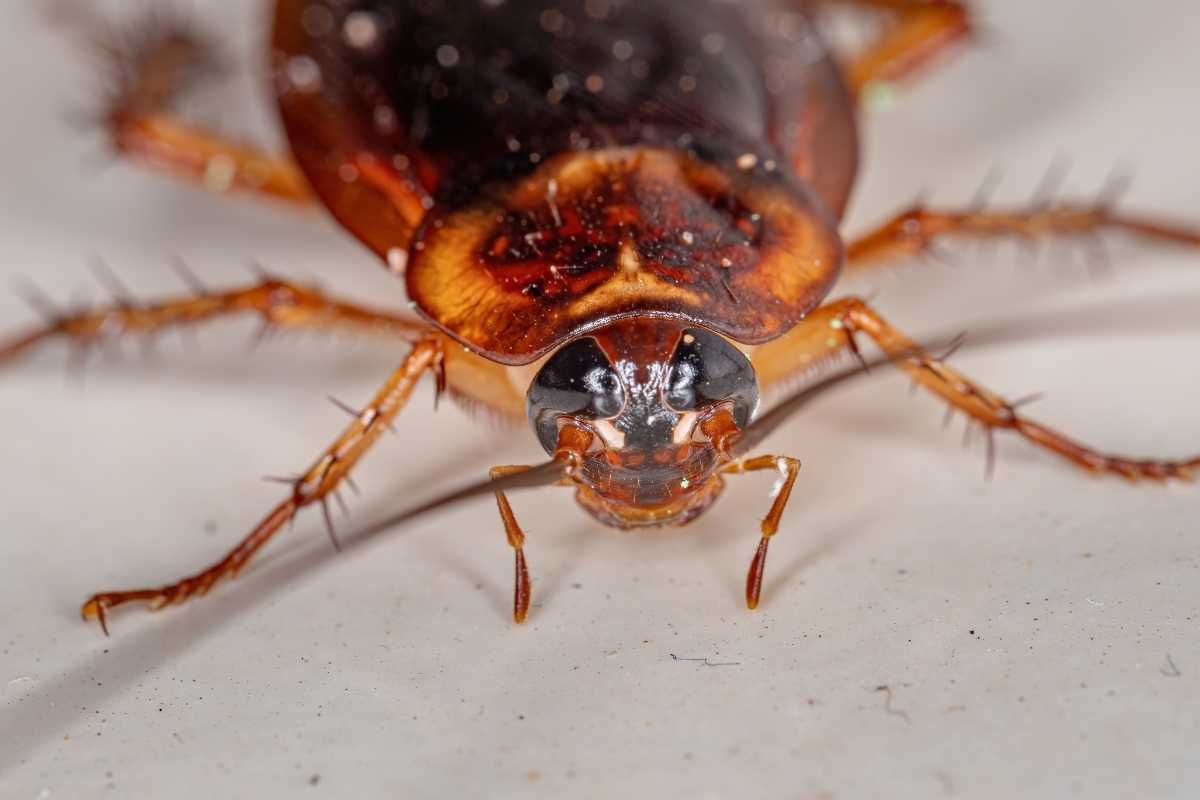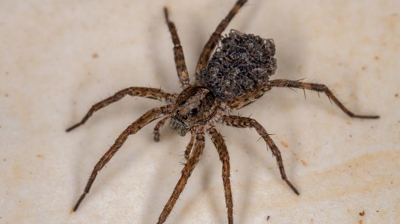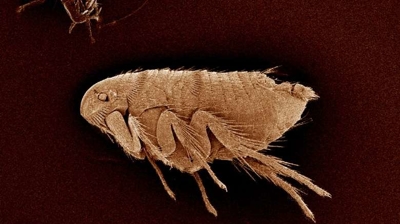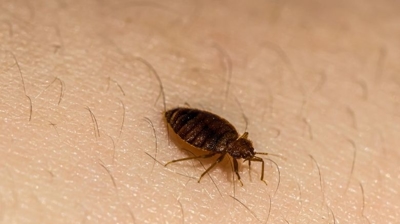
American Cockroach Control Services

American Cockroaches
American cockroaches (Periplaneta americana) are generally considered to be a nuisance pest, but they do have the potential to be dangerous in certain situations. Here are some of the ways that American cockroaches can pose a threat to human health and safety:
- Spread of disease: While American cockroaches are not known to transmit diseases directly to humans, they can pick up pathogens from contaminated surfaces or sewage and transport them to other areas. For example, they may pick up Salmonella bacteria from feces and then transfer the bacteria to food or food preparation surfaces.
- Transmission of antibiotic-resistant bacteria: Recent research has shown that American cockroaches can harbor antibiotic-resistant bacteria on their bodies. This is a concern because antibiotic-resistant bacteria are becoming more common and are difficult to treat. While the risk of transmission to humans is still being studied, it is possible that American cockroaches could play a role in the spread of antibiotic-resistant bacteria.
- Contamination of food and surfaces: American cockroaches are attracted to food and water sources, and they can contaminate these items with bacteria, viruses, and other pathogens that they pick up in their environment. They may also leave behind feces, shed skin, and other debris that can further contaminate surfaces. This can potentially lead to food poisoning or other illnesses, particularly if the contaminated food is consumed.
- Allergies and asthma: American cockroaches produce allergens that can cause allergic reactions in some individuals. These allergens can be found in their feces, saliva, and shed skin, and can become airborne and circulate in indoor air. For people with asthma, exposure to cockroach allergens can trigger asthma attacks or make existing asthma symptoms worse.
- Asthma attacks in children: Children who are exposed to high levels of cockroach allergens during early childhood are at increased risk of developing asthma. This is because their immune systems are still developing and may be more sensitive to allergens. In addition, children who have asthma and are exposed to cockroach allergens may experience more frequent and severe asthma symptoms.
- Secondary infections from biting: While American cockroaches are capable of biting humans, it is relatively rare and typically only occurs in situations where they are crowded or stressed. The bites themselves are not usually harmful, but they can lead to secondary infections if the area around the bite is not kept clean.
- Psychological distress: For some individuals, the presence of American cockroaches can cause psychological distress. This is especially true for individuals with entomophobia, or a fear of insects. The constant fear and anxiety caused by the presence of cockroaches can have a negative impact on mental health and wellbeing.
- Economic damage: In addition to the potential health hazards, American cockroaches can also cause economic damage. For businesses, cockroach infestations can lead to lost revenue, damage to reputation, and potential legal liability. For homeowners, the cost of eliminating a cockroach infestation can be significant.
- Structural damage: While American cockroaches do not typically cause extensive damage to buildings, they may chew on paper, cardboard, and other materials. They may also damage fabrics and upholstery. In rare cases, large infestations of American cockroaches may cause damage to wall insulation or other building materials.
- Fire hazard: American cockroaches are attracted to warm, dark, and humid areas, and they may take up residence in electrical equipment. Their feces and body parts can cause short circuits and other electrical problems, increasing the risk of electrical fires. In addition, they may chew on electrical wires, further increasing the risk of fires.
American cockroaches can pose a danger to human health and safety in a variety of ways. To minimize the risk of infestation, it's important to maintain a clean and sanitary environment, eliminate potential food and water sources, and seal up cracks and crevices where cockroaches may enter. If an infestation is suspected, it's best to contact our professional pest control team to ensure that the problem is effectively eliminated.
Learn more: Do American Cockroaches Bite?
American Cockroach Removal
American cockroaches (Periplaneta americana) are among the largest and most resilient household and commercial pests, and the presence of these cockroaches poses several serious concerns that make prompt eradication important:
- Health Risks: American cockroaches are notorious carriers of pathogens. They can pick up bacteria, viruses, and fungi on their legs and bodies as they crawl through sewers, drains, garbage, and other unsanitary areas, then transfer these to surfaces, food, and utensils. This can lead to foodborne illnesses such as salmonella, E. coli infections, gastroenteritis, and other gastrointestinal disorders. Their shed skin, saliva, and feces are also significant triggers for asthma and allergic reactions, particularly in sensitive individuals or children.
- Rapid Reproduction and Infestation: A single female American cockroach can lay dozens of eggs at a time, and their populations can grow quickly under favorable conditions. Once established, infestations are extremely difficult to control, and early intervention is crucial to prevent them from spreading throughout a building or facility. They can inhabit kitchens, basements, bathrooms, sewers, and crawl spaces, making them both hard to detect and widespread once they settle in.
- Structural Contamination: These cockroaches are not picky about their habitat—they can inhabit walls, pipes, vents, and electrical conduits. Their presence often leads to contamination of stored food, surfaces, and equipment. In commercial settings, especially food service or healthcare facilities, this can violate hygiene standards, potentially leading to legal consequences, fines, or closure of the business.
- Odor and Property Damage: American cockroaches secrete a distinctive, musty odor that can permeate infested areas. They also leave stains and fecal spots on walls, floors, and paper products. Their constant movement through wiring and insulation can occasionally cause minor damage or create fire hazards in rare cases, though the primary concern is hygiene rather than structural damage.
- Psychological and Social Impact: Beyond the physical risks, infestations cause stress and discomfort. The sight of large, fast-moving cockroaches can lead to anxiety and sleep disruption. For businesses, seeing cockroaches can significantly damage reputation and consumer trust.
- Resistance and Survival Advantage: American cockroaches are highly resilient. They can survive in harsh conditions, go without food for extended periods, and tolerate a range of temperatures. This makes infestations persistent unless aggressive and professional control measures are applied.
Eradicating American cockroaches is critical not only for health reasons but also for maintaining hygiene, safety, and peace of mind. Due to their rapid reproductive rate, disease transmission potential, and ability to hide in inaccessible areas, early detection and our professional intervention are essential. Left unchecked, they can create a severe public health and sanitation problem that is far more difficult and costly to resolve.
Learn more: How To Get Rid Of American Cockroaches
American Cockroach Control
Hiring our professional pest control services for American cockroaches (also known as palmetto bugs or water bugs) is strongly recommended because these insects are notoriously difficult to eliminate and pose health and structural risks. Here’s why our professional intervention is the most effective approach:
- Expert Identification and Inspection: Our professionals can accurately identify American cockroaches and differentiate them from other similar species like German or Oriental cockroaches. We perform thorough inspections to locate hiding spots, breeding areas, and access points. These roaches often hide in dark, damp places like sewers, crawl spaces, basements, and behind appliances, which homeowners might miss.
- Targeted Treatment Plans: Our professionals use specialized insecticides and baiting systems designed specifically for American cockroaches. Over-the-counter sprays often provide only temporary relief because they do not reach the roaches’ nests or eggs. Treatments are tailored to the level of infestation, the layout of your home or business, and the safety of your family, pets, and staff.
- Control of Reproduction: American cockroaches reproduce rapidly; a single female can lay dozens of eggs at a time. Our professionals not only eliminate visible roaches but also target egg cases (oothecae), preventing new generations from emerging.
- Prevention and Exclusion: Our experts implement long-term preventive strategies, such as sealing entry points, reducing moisture sources, and eliminating food sources. We may recommend sanitation and structural improvements that dramatically reduce the chances of re-infestation, something DIY treatments often overlook.
- Health and Safety Considerations: American cockroaches can carry bacteria, fungi, and parasites that may contaminate food and surfaces, potentially causing illnesses like salmonella or gastroenteritis. Improper use of chemical treatments can pose health risks. Our professionals handle chemicals safely, applying them in the right concentration and in areas inaccessible to children and pets.
- Time and Cost Efficiency: DIY treatments often involve repeated efforts with inconsistent results, leading to wasted time and money. Our professionals provide an efficient, systematic approach that addresses the problem at its source, saving you ongoing frustration and repeated expenditures.
- Peace of Mind: Knowing that your infestation is handled by our trained experts gives assurance that the roaches are truly eliminated, rather than temporarily driven away. We provide ongoing protection plans to ensure long-term control.
American cockroaches are resilient, fast-breeding, and capable of spreading disease. While DIY measures might reduce numbers temporarily, our professional pest control ensures complete elimination, long-term prevention, and safe application of treatments, saving you time, money, and health risks.
American Cockroach Exterminators
Hiring our local exterminators for American cockroaches provides significant advantages over relying on a national or franchised pest control company, particularly given this species’ unique behaviors and resilience:
In-Depth Knowledge of Local Habitats and Conditions
American cockroaches thrive in specific environments, often favoring warm, humid areas such as basements, sewers, crawl spaces, and near plumbing. Our local exterminators have firsthand experience with:
- The common nesting sites in your geographic area.
- Seasonal activity patterns that affect cockroach behavior.
- Local climate conditions that influence population growth and hiding patterns.
National companies may rely on standardized protocols that don’t account for these subtle but critical regional differences, which can lead to incomplete treatment and less than desirable results.
Tailored, Species-Specific Approach
American cockroaches are much larger and more mobile than German cockroaches and require different treatment strategies:
- Targeted baits and insect growth regulators placed in key hiding spots.
- Identification of water sources and structural entry points.
- Knowledge of which residual sprays are effective for heavy infestations in your type of property.
Our local exterminators will customize a treatment plan based on these factors rather than applying a generic, one-size-fits-all method.
Faster Response and Ongoing Support
Cockroach infestations can escalate rapidly. Our local exterminators typically respond faster than national companies because we operate within your community and can schedule services promptly. Follow-up visits can also be coordinated with flexibility to adjust treatments as needed. You can also build a relationship with our technician who understands your property and history, improving long-term control.
Knowledge of Building Codes, Plumbing, and Structural Challenges
American cockroaches exploit structural features such as vents, sewer lines, and damp crawlspaces. Our local exterminators:
- Understand typical local construction practices and plumbing layouts.
- Know where cockroaches are most likely to hide in your type of building.
- Frequently recommend preventive modifications, such as sealing gaps, improving drainage, or installing traps in optimal locations.
National companies often have technicians who are less familiar with these local specifics, leading to less efficient eradication.
Cost-Effectiveness and Accountability
- We are motivated to maintain a strong local reputation, meaning higher accountability and willingness to re-treat without extra cost if infestations persist.
- Communication is more direct and consistent; you routinely deal with the same team rather than out-of-state call centers and rotating staff.
Prevention-Oriented Strategies
American cockroach infestations often return if underlying conditions aren’t corrected. Our local exterminators provide:
- Advice on landscaping, moisture control, and sanitation specific to your neighborhood’s climate and pest pressures.
- Monitoring strategies tuned to peak cockroach activity in your region.
National companies may provide generic prevention tips that are less effective for the specific challenges of your property.
For American cockroaches, which are highly mobile, disease-prone, and resilient, our local exterminators provide faster, more targeted, and context-aware treatment than a national company. Our deep familiarity with local infestation patterns, structures, and climate conditions, combined with personalized follow-up and preventive advice, makes our eradication more effective and long-lasting.
What Do American Cockroaches Look Like?
American cockroaches are among the largest common cockroach species, and they have distinct physical features that make them relatively easy to identify:
- Size: Adults typically measure 1.5 to 2 inches (3.8–5 cm) in length, making them noticeably larger than most other household cockroaches.
- Color: They are reddish-brown overall, with a slightly glossy appearance.
- Pronotum Markings: The area behind the head, called the pronotum, usually has a yellowish or pale margin that can appear like a horseshoe shape.
- Wings: They have fully developed wings, with the wings extending past the end of the abdomen, allowing them to glide short distances.
- Antennae: Like all cockroaches, they have long, thin antennae that are often as long as or longer than their bodies.
- Body Shape: Their bodies are oval and flattened, which helps them squeeze into narrow spaces.
American cockroaches are often called palmetto bugs, especially in southern states.
Where Are American Cockroaches Found?
American cockroaches, or Periplaneta americana, are highly adaptable insects and can be found in a variety of habitats. Here are some of the environments in which American cockroaches may be commonly encountered:
- Urban Environments: American cockroaches are frequently found in urban areas, including cities and towns. They often infest homes, apartments, restaurants, and commercial buildings. They thrive in these environments due to the abundance of food sources, warmth, and shelter.
- Residential Dwellings: These cockroaches can infest houses and apartments, particularly in areas with poor sanitation and excess moisture. They hide in dark, warm spaces such as basements, crawl spaces, and wall voids.
- Commercial Establishments: American cockroaches are known to infest restaurants, bakeries, grocery stores, and other food-related businesses. They are attracted to food storage areas and kitchens.
- Sewers and Drains: The dark and damp conditions in sewers and drainage systems are ideal for American cockroaches. They often enter buildings from these locations through plumbing and sewage systems.
- Outdoor Habitats: While they primarily thrive indoors, American cockroaches can also be found in outdoor environments in warm, humid regions. They inhabit places like tree hollows, mulch beds, and decaying wood.
- Greenhouses: These cockroaches may infest greenhouses and nurseries, where they can feed on plant matter and organic debris.
- Warehouses and Storage Facilities: Facilities with stored goods can attract American cockroaches, as they feed on a wide range of organic materials, including paper, cardboard, and food products.
- Public Buildings: They can infest public buildings such as libraries, schools, and hospitals, especially if these structures provide them with suitable hiding spots and food sources.
- Steam Tunnels: In some urban areas, they have been known to inhabit steam tunnels, utility tunnels, and underground infrastructure where warmth and moisture are present.
- Palm Trees: In warmer regions, American cockroaches are known to infest palm trees, where they find shelter and food sources.
American cockroaches prefer warm and humid conditions and are most active at night. Effective pest control measures, sanitation practices, and eliminating sources of moisture can help reduce the likelihood of infestations in these various habitats.
What Do American Cockroaches Eat?
American cockroaches are opportunistic omnivores, which means they have a wide-ranging and adaptable diet. They can consume a variety of organic materials and are known for their ability to thrive in diverse environments. Here is what American cockroaches eat:
- Decaying Organic Matter: American cockroaches are scavengers and readily feed on decaying organic matter. This can include dead insects, plants, and animals, as well as rotting wood and leaves.
- Human Food: They are often found near human habitation and readily feed on a range of human foods, including crumbs, leftovers, and food waste. They are attracted to starches, sweets, meats, and fatty or greasy foods.
- Pet Food: American cockroaches are known to consume pet food, and they are often found near pet feeding areas, especially if pet food is left out overnight.
- Cardboard and Paper: These cockroaches can digest cellulose, a component of plant cell walls, and may chew on paper products like cardboard, books, and wallpaper, which can be a source of sustenance.
- Soap: In some cases, they have been known to feed on soap, particularly soap scum that may accumulate in damp areas.
- Hair and Shed Skin: American cockroaches can feed on hair, dead skin, and other organic debris found in areas where they hide.
- Glue and Adhesives: They are sometimes attracted to the adhesives in book bindings, labels, and the glue used in furniture.
- Dead Insects: American cockroaches are cannibalistic and will consume dead or injured cockroaches, as well as other insects.
- Plant Material: While not their primary food source, American cockroaches may nibble on plant material and pollen, particularly in outdoor environments.
While American cockroaches can consume a wide range of materials, they are more likely to be attracted to food and organic matter in warm, humid environments. This adaptability is one of the factors that contribute to their success as pests. To prevent infestations, it's crucial to maintain good sanitation practices, seal food containers, and eliminate potential food sources that may attract these roaches.
American Cockroach Life Cycle
The life cycle of American cockroaches (Periplaneta americana) undergoes incomplete metamorphosis, consisting of three main stages: egg, nymph, and adult. Here's an overview of their life cycle:
Egg Stage:
- The life cycle begins with the female American cockroach producing an ootheca, a protective egg case.
- This ootheca is purse-shaped and contains multiple eggs.
- A single ootheca can hold up to 16 eggs or more.
The female deposits the ootheca in a hidden, sheltered location, ensuring it is protected from environmental factors and predators. - The incubation period for the eggs lasts about 6 to 8 weeks, depending on temperature and humidity.
Nymph Stage:
- Once the eggs inside the ootheca hatch, nymphs emerge.
- Nymphs resemble adult American cockroaches in terms of body shape but are smaller and lack wings.
- They undergo several molts (shedding of their exoskeleton) as they grow. During each molt, they get larger and develop more adult-like features.
- The number of molts varies but typically ranges from 10 to 13, with each nymph stage being referred to as an instar.
- Nymphs are white when they first hatch and gradually darken in color as they molt and develop. They develop their wings during these stages as well.
- Nymphs actively feed, grow, and seek out suitable hiding places during this stage.
Adult Stage:
- After completing the nymph stages, American cockroaches become sexually mature adults.
- Adults have fully developed wings, which allow them to fly.
- They have a lifespan of about 1 to 2 years, during which they can reproduce and continue the life cycle.
- Adult American cockroaches are primarily nocturnal, coming out at night to search for food and mates.
- Reproduction occurs when males locate females and mating takes place.
The life cycle of American cockroaches can vary in duration depending on factors like temperature, humidity, and food availability. Under optimal conditions, their life cycle can be completed relatively quickly, allowing for the rapid growth of infestations. Effective control and prevention measures are essential to manage these pests and disrupt their life cycle.

Hear From Our Happy Customers
-
"Very Knowledgeable"
The tech that arrived was courteous, professional, and very knowledgeable. He was Great.
- Uerial I. -
"Exceeds Expectations"
I can’t say enough positive things about this company... The tech that came out, Jarvis went above and beyond my expectations. Thank you guys, I will continue using your services.
- Jake M. -
"Fantastic & Patient"
Jarvis was fantastic and patient. He answered my questions with an in-depth explanation and addressed all of my areas of concern. Would love for him to be my assigned tech going forward. Well done!
- Yonnette M. -
"Great Communication"
Tech was on time, communication was great, and he accommodated my needs.
- Alonzo W. -
"Professional & Considerate"
I’m pleased with Miche services. Jarvis came today. Professional and considerate. Thank you!
- Judy B. -
"Wonderful Service"
Wonderful service. Jarvis is great. Took care of everything I needed. Thank you!
- Henry P.



